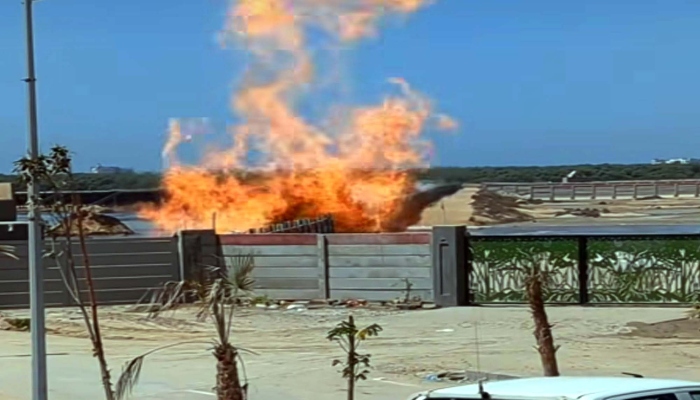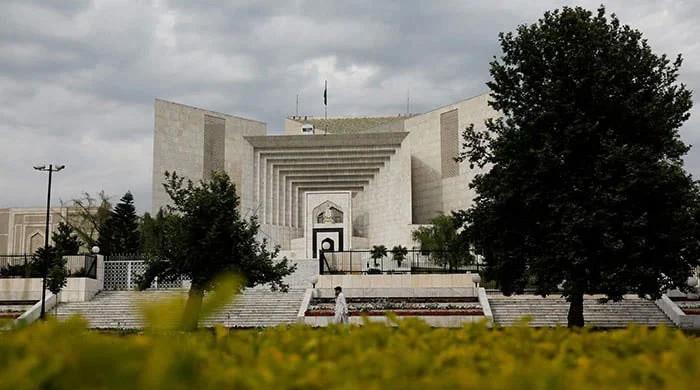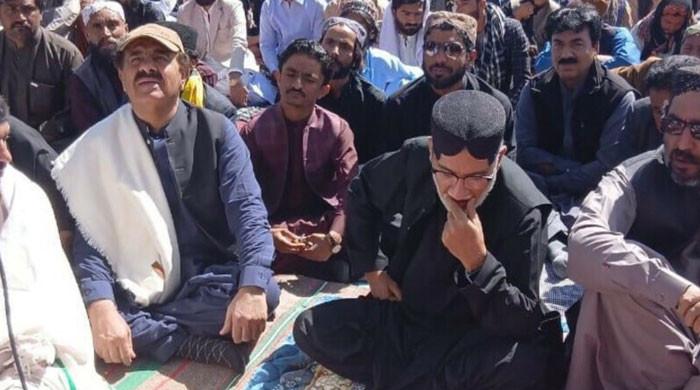Toxic chemicals found in Korangi Creek fire water sample: report
Toxic compounds benzene, toluene, tetrachloroethylene and o-xylene detected in water sample
April 06, 2025

- Tetrachloroethylene six times higher than the acceptable limit.
- Benzene, toluene levels are over triple the prescribed threshold.
- A slightly elevated quantity of o-xylene was also detected.
KARACHI: A preliminary chemical analysis of the water breaking out of the ditch at the site of the ongoing fire in the Korangi area has revealed presence of hazardous chemicals, sources within Pakistan Petroleum Limited (PPL) said on Saturday night.
The initial report, compiled following water sampling from the fire site, has detected excessive quantities of benzene, toluene, and tetrachloroethylene.
The report states that tetrachloroethylene was measured at 33 microgrammes per litre, significantly above the standard limit of 5 microgrammes. Benzene concentrations were recorded at 19 microgrammes per litre, again surpassing the permissible threshold of 5 microgrammes.
Similarly, toluene was found at 15 microgrammes per litre, three times higher than the recommended safety level. Additionally, a slightly elevated quantity of o-xylene was also detected in the water sample, though the exact amount was not specified.
However, the overall hydrocarbon content in the water was found to be within permissible limits, according to the preliminary findings.
The recent report is an initial report, which will be followed by several more reports on isotopic carbon and isotopic analysis, Geo News reported.
The investigation is a lengthy process and various chemicals have been identified in the first water analysis. However, the level of hydrocarbons, which indicate the presence of oil and gas, is within permissible limits.
Initially, the colour of the flames was greenish, which typically indicates higher intensity. However, experts will need to confirm whether the increase in intensity signals that the fire is worsening or dying out.
These revelations come as authorities continue to investigate the cause and composition of the fire that erupted on March 29 during a 1,200-foot-deep bore drilling operation conducted near Korangi Creek.
The fire is suspected to have been triggered by the accidental release of biogenic methane gas due to disturbances in underground earth plates, located approximately 1,100 to 1,200 feet below the surface.
Karachi Metropolitan Corporation Chief Fire Officer Humayun Khan earlier ruled out the presence of a large underground gas reserve based on the nature of the fire.
He also cautioned that while extinguishing the flames may be technically feasible within an hour, doing so could release flammable gases into surrounding areas, potentially endangering local residents.
Khan noted that such fires are often left to burn out naturally over the course of several weeks to prevent the formation of toxic gases. Chemical analysis of sand and water samples was delayed due to Eid holidays.
According to recent observations, the colour of the fire has turned reddish over time, and its volume has increased by approximately 5% to 10%.
Initially, the colour of the flames was greenish, which typically indicates higher intensity. However, experts will need to confirm whether the increase in intensity signals that the fire is worsening or dying out.
So far, there has been no response from the Sindh Ministry of Energy.
Currently, no fire brigade teams are available at the site, nor is any foaming activity being carried out, a modern technique that has been suggested as an alternative to water.
Moreover, both the Sindh and federal government authorities are silent on the matter.
The district administration has already sealed off the affected plot, and no active firefighting efforts are currently underway. The situation remains under close observation.
Meanwhile, the Sui Southern Gas Company (SSGC) confirmed that its installations were not in proximity to the fire-affected area, while PPL was carefully assessing the impact on the gas supply.
Authorities continue to emphasise that the safest course of action is to allow the gas to burn out naturally. Experts have suggested that if the gas reserves are indeed small, the fire could extinguish itself within a few days.
However, if the reserves prove to be more substantial, further containment measures will be implemented to secure the area and mitigate the risk to surrounding communities.











